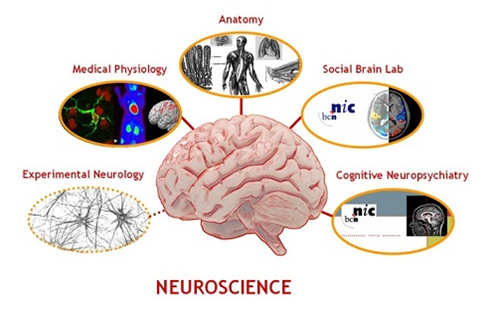Neuroscience
Neuroscience is a branch of Biology, which is the scientific study of the nervous system. Though, it is presently an interdisciplinary science which collaborates with other fields like computer science engineering, chemistry, linguistics, medicine, and allied disciplines, philosophy, and psychology. The term neurobiology is generally used interchangeably with the term neuroscience, though the previous refers particularly to the biology of the nervous system, while the latter refers to the whole science of the nervous system.
The scope of neuroscience has broadened to involve different approaches used to study the cellular, molecular, structural, computational, evolutionary, and medical aspects of the nervous system. The methods used by the neuroscientists have also expanded extremely, from molecular and cellular studies of individual nerve cells to imaging of the sensory and motor tasks in the brain. Current theoretical advances in neuroscience have also been aided by the study of neural networks.

The increasing numbers of scientists who study the nervous system, numerous prominent neuroscience organizations have been formed to give a forum to all neuroscientists. For illustration, the International Brain Research Organization was established in 1960, the International Society for Neurochemistry in 1963, the European Brain and Behavior Society in the year 1968, and Society for Neuroscience in 1969.
The study of the nervous system begins from ancient Egypt. The Evidence of trepanation, the surgical practice of either drilling or scraping a hole into skull with the aim of curing headaches or mental disorders or relieving cranial pressure, being executed on patients has been found in different cultures throughout the world. The Manuscripts dating back to1700 BC specified that the Egyptians had a little knowledge about neuroscience.
The scientific study of the nervous system has increased appreciably during the second half of the 20th century, mainly due to advances in electrophysiology, molecular biology, &computational neuroscience. This has permitted neuroscientists to study the nervous system in all its aspects: how it works, how it is structured, how it develops, how it malfunctions, and how it can be modified. The nervous system appears from the assemblage of neurons which are connected to each other.